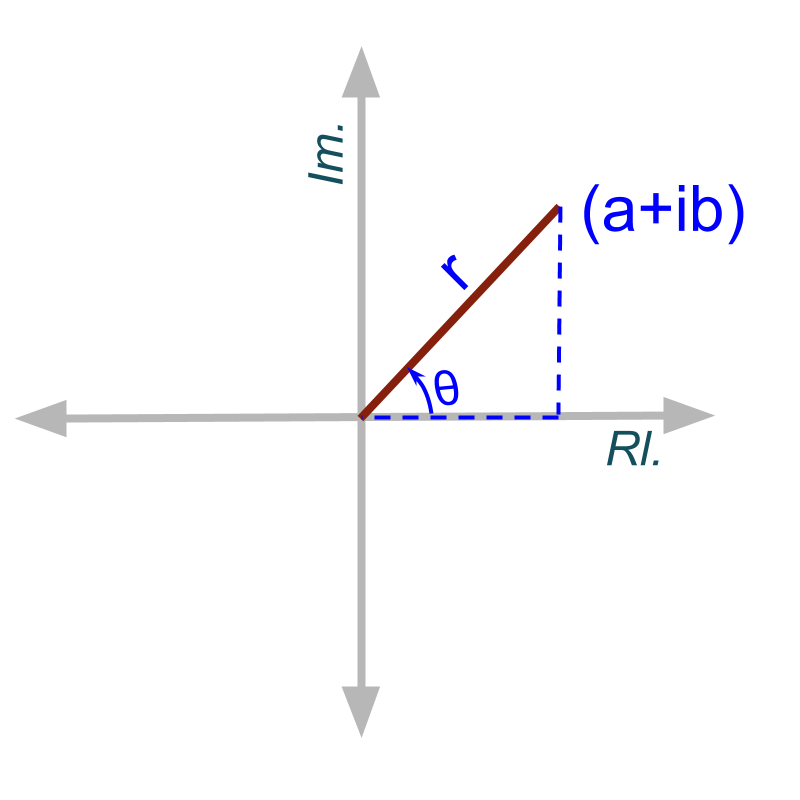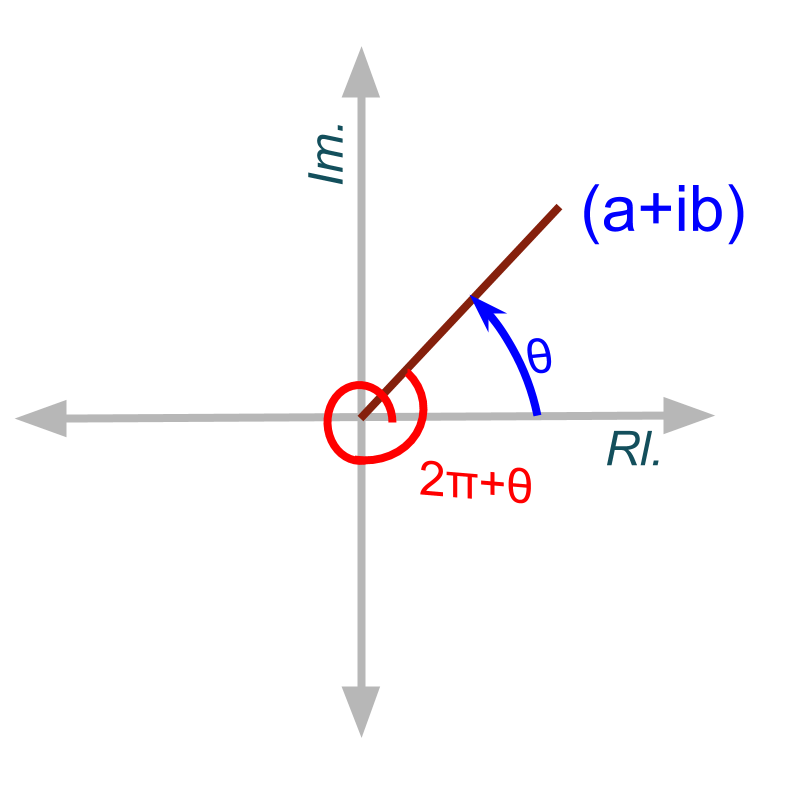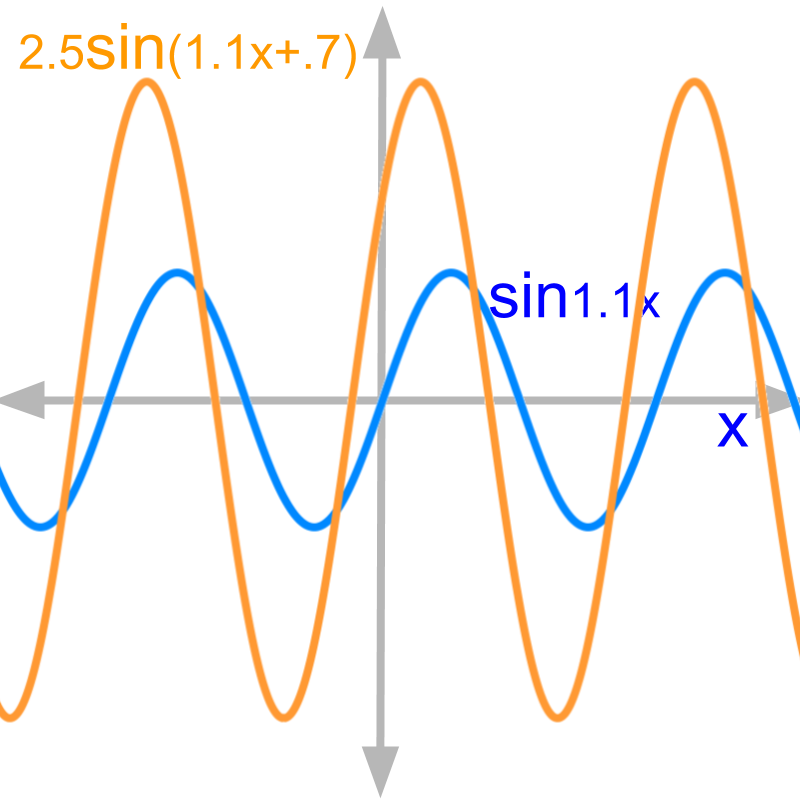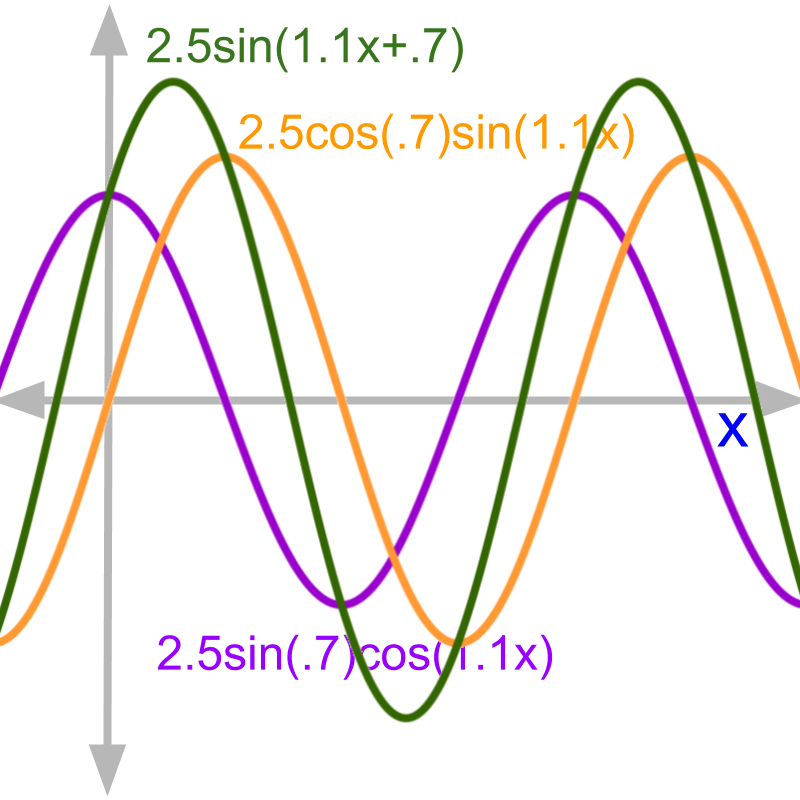
Complex Numbers
Welcome to the novel approach to understanding complex numbers: it completely changes the way complex numbers are thought-about and learned.
• Irrational numbers are numerical expressions, eg:
» Complex numbers are numerical expressions too.
• Irrational numbers do not have a standard form. They are expressed as numerical expressions, with some having many terms. eg:
» Similar to irrational numbers, the direct extension is to express complex numbers as numerical expressions. eg: has solutions, , ,
» But, Any complex number is given in a standard form , because of Euler Formula
How so? Go through the first few lessons to get the astoundingly new perspective of complex numbers.
maths > complex-number > complex-number-in-number-system
Complex Numbers in Number System
This page starts with a quick revision of number system hierarchy. Complex numbers are introduced as an extension of Real Numbers. Then it reviews, the representation of irrational numbers. The complex number notation is very similar to the representation of irrational numbers -- both are given as numerical expressions.
Number System Hierarchy
» Natural or counting numbers
→ Counting with hands 1, 2, 3, ...
» whole numbers
→ 0 is included
» integers
→ negatives are included.
» rational numbers
→ fractions and decimals are included.
» real numbers
→ irrational numbers included. numbers represented as expressions
» complex number : form
→ is the real part
→ is the imaginary part
→
→ Complex means "consisting of many different parts"
Irrational Number Representation
» irrational numbers
→ solutions of algebraic equations in real line
→ eg: is one solution of
» irrational numbers are represented as numerical expressions
→ eg: is one solution of
maths > complex-number > complex-number-incomplete-notation
Representation of Complex Numbers (incomplete)
In this page, as initial understanding of complex numbers, quadratic equations are examined. The solutions to quadratic equations is in the form , where .
Complex number in the form can be equivalently represented in the form . This representation, has an advantage to understanding the generic form of complex numbers.
Complex number Representation
» Abstraction of complex numbers
→ solution of algebraic equations in 2D plane
→ eg: has solutions, , ,
» complex numbers are numerical expressions
→ eg: is one solution to
» solution to quadratic equation in the form
→
Note: irrational numbers do not have a generic form. But, it is later proven that all complex numbers can be expressed in the form .
For now, only solution to quadratic equation is shown to be in the form .
Representations of Complex Numbers
» coordinate form
» polar form
abstracted from
→
→
→
maths > complex-number > complex-number-euler-formula
Euler's Formula
To understand the generic form of complex numbers as , one should know Euler's Formula. This helps to convert numerical expressions of various forms to the form .
Euler's formula
» exponent form of complex number
»
→ is the base of natural logarithm
→ abstracted based on the properties of polar form
The coordinate form, polar form, and exponent form help to establish a generic representation for all complex numbers.
maths > complex-number > generic-form-complex-numbers
Generic Form of Complex Numbers
Irrational numbers are specified with the operations such as , , etc. Unlike irrational numbers, complex numbers have an uniform representation. This page explains this in detail.
Generic Form of Complex Numbers
» All complex numbers are in the form
» Example: Solutions of
→
→
→
maths > complex-number > complex-number-polar-form
Argand Plane and Polar Form
Complex number is equivalently an ordered pair which can be abstracted to represent a 2D plane called Argand Plane or Complex Plane.
Complex Plane
» Real line extended to complex plane
→ Argand Plane
 » Complex plane for
» Complex plane for
→ real part on real-axis or real-line
→ imaginary part on imaginary-axis
→ coordinate equivalent
Modulus
» distance from origin is modulus
 »
»
by Pythagorean Theorem
Argument
» Angle with positive real-axis
 »
»
» Arguments where
» Principal argument where
Polar form
maths > complex-number > modeling-sine-waves-complex-arithmetic
Complex Number Arithmetics & modeling sine waves
This page brings up the question, what are the applications of complex numbers and outlines those application scenarios.
This page provides proofs, illustration, and explanation to how complex number is used to model sine waves and elements interacting with sine waves.
Basis of Complex Number Arithmetic
» Modeling sine waves
→ same frequency
→ different amplitude
→ different phase
 » amplitude and phase
» amplitude and phase
→ is shown in blue
→ is shown in orange
amplitude is the size change.
phase is the horizontal shift.
Modeling sine waves
» Algebraic explanation
→
substitute formula
→
substitute
→
substitute coordinate form of complex number
→
considering that is a constant, can be taken off the expression.
→
» Geometrical explanation
→
A sine wave with an amplitude and phase can be equivalently represented as sum of a sine wave and a cosine wave of different amplitudes and phase.

» Sine waves of same frequency is modeled with complex number
→ Complex addition as per sine wave addition
→ Complex multiplication as per sine wave interaction.
maths > complex-number > understanding-complex-arithmetic-and-equivalence
Understanding Complex Arithmetic and equivalence
Complex number arithmetic like addition, multiplication, etc are nothing but extension of real number arithmetic.
Complex Arithmetic as Numerical Expression
» Real Number arithmetic
→ Addition with closure, commutative, associative, identity, inverse properties
→ Multiplication with closure, commutative, associative, distributive, identity, inverse properties
→ subtraction and division as inverse of addition and multiplication respectively
→ PEMDAS / BODMAS Precedence rule
» Complex number arithmetic
→ extension of real arithmetic with additional number
→ is handled like a variable
→ maps to a real number
When Two Complex numbers are Equal?
» if two complex numbers and are equal then
→ and
→
maths > complex-number > complex-number-addition-subtraction
Addition and Subtraction of Complex numbers
Complex Number Addition
»
by associative, commutative, distributive laws of real numbers and by considering as a variable
→
Complex Number Subtraction
»
by associative, commutative, distributive laws of real numbers and by considering as a variable
→
maths > complex-number > complex-number-multiplication-conjugate-division
Multiplication, Conjugate, & Division in Complex numbers
Complex number multiplication
»
by associative, commutative, distributive laws of real numbers, considering as a variable, and applying
→
Complex Number Conjugate
» Conjuage of
Conjugate means "coupled or related". Conjugate of a complex number makes the number real by addition or multiplication.
→
→
Complex Number Division
»
by multiplicative identity, multiplicative inverse, distributive properties.
→
→
maths > complex-number > complex-number-exponents-roots
Exponent and Root of Complex Numbers
Exponent of Complex Numbers
» Play with the forms of the complex number
→ component form
→ polar form
→ exponent form
» Convert to the standard form of complex numbers
→ eg: : convert to polar form
→ eg: : convert to
Power of i
» To calculate
Remember and . Quickly derive the following using this. No need to memorize
→ express in the form , where natural numbers.
→
maths > complex-number > complex-arithmetic-properties-addition
Properties of Complex Addition
Properties of complex number arithmetic is almost same as real number arithmetic as Complex number arithmetic is nothing but extension of real number arithmetic.
Understanding Properties of Complex Arithmetic
» The properties of real number arithmetic is extended to include as a number that cannot be added or multiplied to other real-numbers.Properties of Complex numbers extend on properties of Real numbers.
» Complex Addition is closed.
→
» Complex Addition is commutative.
→
» Complex Addition is associative.
→
» Complex Additive identity is .
→
» Complex Additive inverse of is
→
» Complex modulus of sum is less than or equal to sum of moduluses
→
maths > complex-number > complex-arithmetic-properties-multiplication
Properties of Complex Multiplication
» Complex Multiplication is closed.
→
» Complex Multiplication is commutative.
→
» Complex Multiplication is associative.
→
» Complex Multiplicative identity is .
→
» Complex Multiplicative inverse of is .
→
» Complex Multiplication is distributive over complex addition.
→
» Modulus of product is product of modulus.
→
» argument of product is sum of arguments of multiplicand and multiplier.
→
maths > complex-number > complex-arithmetic-properties-conjugate
Properties of complex conjugate
Properties of complex conjugate is discussed in detail.
» Complex conjugate
→ distributes into addition, multiplication, and power
→
→
→
→ modulus of the conjugate equals the modulus of the number
→
→ argument of the conjugate is negative of the argument of the number
→
maths > complex-number > complex-number-algebraic-identities
Algebraic Identities for Complex numbers
The algebraic identities of complex number is same as that for real numbers.
Complex Algebraic Identities
» All identities of real-numbers holds
→
→ , etc.